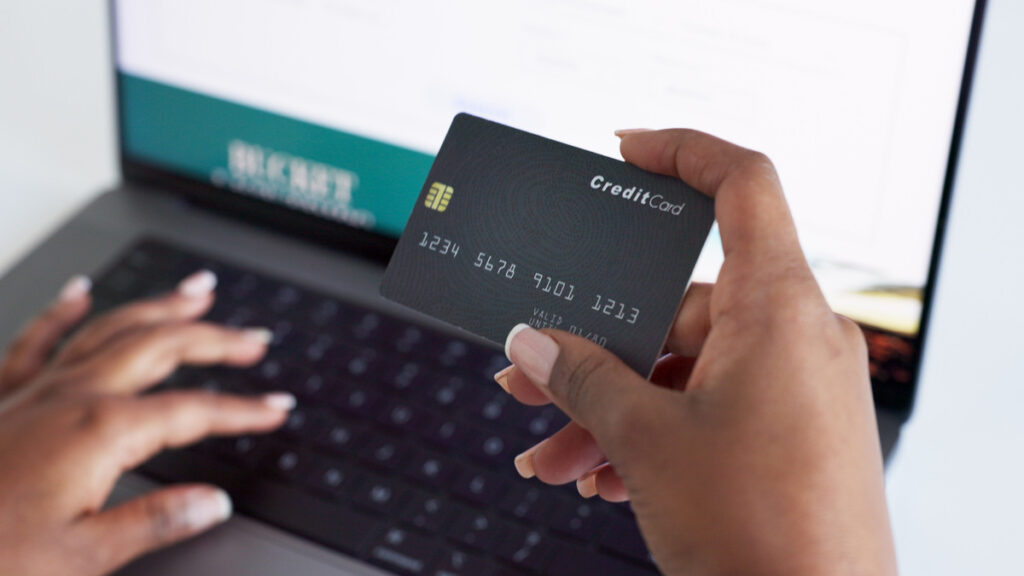
February 27, 2024
Credit card decline codes: Updated list and how to fix them (2025)
- What are the card decline codes?
- Are credit card decline codes universal?
- What is credit card failure?
- What is a credit card processor error?
- What is card validation error?
- Complete list of credit card decline codes and how to fix them
- What does credit card validation error mean?
- What is an example of a validation error?
- How do I check for validation errors?
- What is the difference between validation error and warning?
Navigating the waters of credit card decline codes can be daunting for anyone involved in handling transactions, whether you’re a seasoned business owner or new to the game. Understanding these codes is crucial to ensuring smooth payment processes and minimizing customer disruptions. This comprehensive guide aims to demystify the topic, providing a detailed list of common decline codes and practical advice on addressing them.
What are the card decline codes?
Card decline codes are short messages or numbers credit card processors use to indicate why a transaction was not approved. These codes are communicated to the merchant at the point of sale and can range from insufficient funds to suspected fraud. Each code has a specific meaning, helping the merchant understand what went wrong and how to rectify the situation possibly.
Are credit card decline codes universal?
While many credit card decline codes are standardized across the industry, there needs to be more than one-size-fits-all answer. Different banks and card networks might use unique codes or variations. However, there’s a significant overlap in the most common codes used, making it easier for merchants to recognize and address the most frequent issues.
What is credit card failure?
Credit card failure occurs when a transaction cannot be completed as requested. This could be due to various reasons, including technical problems, incorrect card details, or the bank’s refusal to authorize the payment. Understanding the specific decline code can help identify the cause of failure and guide the next steps.

What is a credit card processor error?
A credit card processor error happens when there’s a technical problem in the payment processing chain. This could be due to issues with the merchant’s payment gateway, the processing network, or bank systems. These errors are usually temporary and can often be resolved by retrying the transaction after a short wait.
What is card validation error?
A card validation error indicates that the information entered does not match the card issuer’s records. This could be a simple typo in the card number, expiry date, or CVV, but it requires correction before the transaction can proceed. Ensuring accurate data entry is a straightforward fix for these errors.
Complete list of credit card decline codes and how to fix them
Addressing credit card decline codes often involves understanding the reason behind the decline and taking appropriate action. Here’s an overview of common credit card decline codes, including potential fixes:
- 01 Refer to card issuer: Contact the card issuer for further information. The cardholder may need to verify personal information or update their account status.
- 02 Refer to issuer’s special conditions: Similar to code 01, the cardholder needs to contact their bank for specific instructions.
- 03 Invalid merchant or service provider: The merchant should ensure they are authorized to accept payments from this card type or issuer.
- 04 Pick up card (no fraud): The merchant should ask the cardholder for an alternative form of payment. The cardholder needs to contact their bank.
- 05 Do not honor: The cardholder should check the account for issues and contact the bank for details.
- 07 Pick up card, special conditions (lost card, suspected fraud): The cardholder should contact their bank immediately as the card may have been reported lost or stolen.
- 08 Honor with identification: Verify the cardholder’s identity. If identity cannot be verified, use an alternative payment method.
- 12 Invalid transaction: Ensure the transaction details are correct and retry. If the problem persists, use another payment method.
- 13 Invalid amount: Verify the transaction amount is correct and within permitted limits.
- 14 Invalid card number: Check the card number and re-enter it. If incorrect, try a different card.
- 15 No such issuer: Verify the card details are correct. If the issue persists, the cardholder should contact their bank.
- 33 Expired card: The cardholder should use an alternative card or payment method.
- 34 Suspected fraud: The cardholder should contact their bank to clarify any misunderstanding and verify recent transactions.
- 36 Restricted card: The cardholder needs to contact their bank to lift restrictions or use a different card.
- 38 Allowable PIN tries exceeded: Wait a designated period or contact the bank to reset the PIN attempts.
- 41 Lost card: The cardholder needs to report the card lost to their bank and use an alternative payment method.
- 43 Stolen card: Similar to code 41; report the card stolen and use a different payment method.
- 51 Not sufficient funds: The cardholder should verify their account balance and make a deposit or use an alternative payment method.
- 54 Expired card: Use an updated card or alternative payment method.
- 55 Incorrect PIN: Retry with the correct PIN or use a different payment method.
- 57 Transaction not permitted to cardholder: The cardholder must contact their bank for transaction permissions or use a different card.
- 61 Exceeds withdrawal limit: Reduce the transaction amount, wait until the limit resets, or contact the bank to adjust the limit.
- 65 Exceeds withdrawal frequency: Wait until the allowed number of transactions or time resets, or contact the bank for adjustment.
- 75 PIN tries exceeded: The cardholder must contact their bank to reset their PIN or use a different payment method.
- 91 Issuer or switch inoperative: Retry the transaction later or use an alternative payment method.
- 96 System malfunction: Retry the transaction. If the issue persists, contact the payment processor for assistance.
These solutions provide a starting point for addressing decline codes. However, the specific steps might vary based on the card issuer’s policies and the transaction context. Always advise the cardholder to contact their bank for personal account issues and guidance.
What does credit card validation error mean?
When you encounter a credit card validation error, the payment information provided doesn’t align with what’s on file with the card issuer. This error safeguards against potential fraud and incorrect charge attempts, ensuring that payments are made with accurate and verified information.
What is an example of a validation error?
An example of a validation error could be entering an incorrect expiration date. If the card is set to expire on 12/24, but 12/23 is entered, the transaction will be declined. Double-checking the entered details against the card can easily resolve this error.
How do I check for validation errors?
Review the information entered during the transaction process to check for validation errors. Look for mistakes like transposed numbers, incorrect expiration dates, or mismatched billing addresses. Some payment platforms provide real-time feedback, highlighting errors as they occur to streamline corrections.
What is the difference between validation error and warning?
The difference between a validation error and a warning is critical. A validation error indicates a problem that must be resolved before a transaction can proceed, such as incorrect card details. A warning, however, might alert you to potential issues that don’t necessarily block the transaction, like an address mismatch, but could suggest a need for further verification.
With the power to route anywhere you choose, businesses can now tailor their payment processing workflow like never before. Whether you’re looking to route card payments based on card type, BIN ranges, transaction amount, or other custom metadata, the possibilities are unlimited. This level of customization ensures that each transaction is handled in the most efficient manner possible, enhancing the checkout experience for your customers while optimizing your operational efficiency.
By dynamically creating retry rules and timeout controls for each payment provider, you can eliminate the headache of failed payments without writing a single line of code. This innovative approach allows for a seamless payment process, ensuring that transactions are processed smoothly and efficiently, regardless of the payment provider. The ability to customize your checkout with unlimited combination choices opens up new avenues for enhancing approval rates and managing transaction costs effectively.
If you want to take control of your payment workflows and optimize your transaction processes, contact gr4vy today. Our team of experts is ready to help you harness the full potential of flexible payment routing, custom retry rules, and comprehensive timeout controls. Make sure to let complex payment processes slow down your business. Let gr4vy help you streamline your operations, improve approval rates, and reduce transaction costs. Reach out now and take the first step towards a more efficient, customized payment solution.